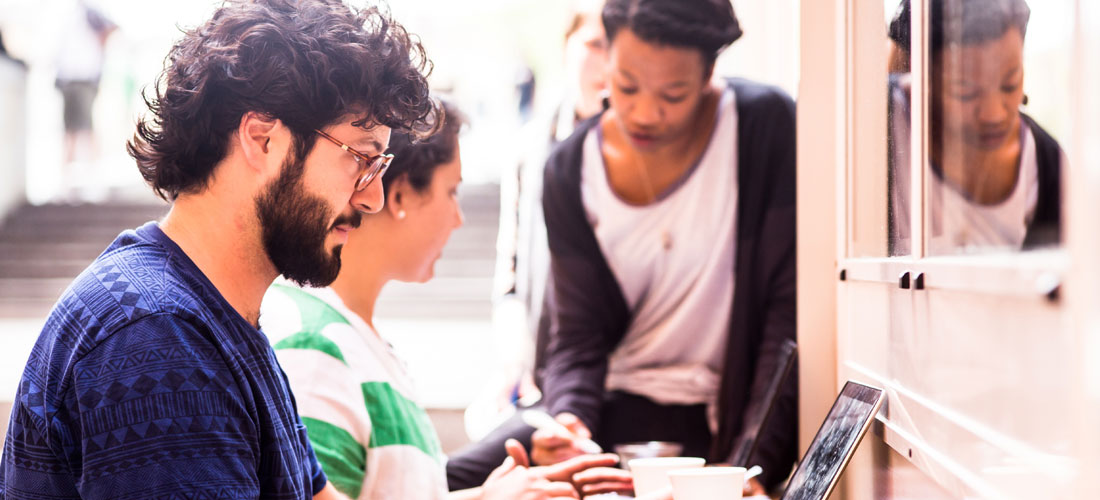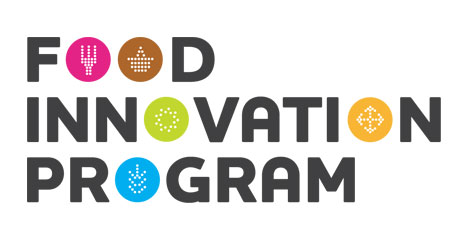
An ordinary bus ride on Italian public transportation turned into a life changing moment for 28 year old Sebastian Melnitzky, a self-described crazy creative, puzzle solver and innate designer hailing from Argentina. Striking up a conversation with the bus driver, the topic turned quickly to food, a common subject in Italian talk. Sebastian was given a quick rundown on many shapes of Italian pasta, and the appropriate sauces to accompany their diverse shapes. “This part of Italian culture is fascinating,” says Sebastian. “[The pasta shapes] are traditional, but also a product of intuition.” And so, inspired not by any sort of trained food professional, but by a chatty Italian citizen with an invested interest in his food, Sebastian has followed his path that will now be taking him to the First European Conference on Understanding Food Design in Milan this week where he will be presenting his research and insight on a panel, where his work CrossModal Correspondence between Taste, Shape and Culture will be shared.
Sebastian has found a passion for food design, investigating why food has a specific shape, and how that particular shape can be a driver for communicating to the consumer what tastes (flavor, aroma, and texture) they might expect or perceive. He is intrigued by something as seemingly simple as the chocolate bar. Despite cross-cultural studies that have proven shape will affect the perception of chocolate, most chocolate bars take the same form, whether they are dark, or milk, or have different percentages of cacao, sugar and milk. In this case, they just change the packaging. Sebastian’s goal is to find out how to communicate not only through packaging, but through also actual shape.
Sebastian got into food design after training professionally as a chef, and subsequently attending a technical college that allowed him to focus on the design world in general. From an early age, says Sebastian, “My way of thinking was shaped by all these design concepts.” As he continued his education, he couldn’t get away from thinking about the connection between these two different fields: food and design. It was difficult to articulate, but luckily, at the same time he started investigating this link, both design and food were hot topics around the globe. During his three years at the University of Gastronomic Sciences in Pollenzo, Italy Sebastian was put in touch with Dr. Pedro Reissig, native Argentinean, professor at The New School of New York and founder of the RedLAFD – Red Latinoamericana de Food Design. Dr. Reissig aided Sebastian on developing a further understanding of his thesis topic “Food Innovation through Design Thinking” and encouraged him to submit his work for the Understanding Food Design Conference.
Sebastian is now enrolled in the Food Innovation Program, where he is further exploring design thinking ideas on how food shape can influence perception. “The most interesting thing I learned is to take a holistic point of view on the product. It is not just packaging—products need to solve problems. Design thinking allows you make tests on design research. It’s about getting insight and high quality information through research. If you can frame the problems in questions, then you get the solutions. “Design,” notes Sebastian, “is all about asking the right questions.”
At first, he explains, as humans we were concerned about what to eat: redness that signified maturity in an apple, or bitterness warning of toxins in foraged foods. When what was addressed, people moved on to the how, inventing cooking vessels, harnessing heat through fire and creating tools like knives to better manipulate food. Finally, the when and the where became the focus—restaurants, tables, chairs, snacks, breakfast, lunch and dinner were all developed as concepts.
Now, thinks Sebastian, we are returning back to the initial question of what. “People are really confused and are trying to figure out what to eat. I find this interesting because there is a trend in food labelling, and people say they want more information,” says Sebastian. “But somehow this is misunderstood. People don’t really need labels to have more information, we can also communicate with the shape of food itself. That’s the part of food design that interests me most.” Sebastian continues to pry into the world of cross-modal relationships where various senses commingle and are understood concordantly (sound and shape, taste and shape, etc.).
Sebastian is thrilled to be featuring at the Understanding Food Design Conference, and looks at it as an opportunity to be surrounded by like minded food designers as well as get new perspectives on various approaches to food design. He hopes that food design concepts will become more infused into both design and food education, and is happy to be doing his part in this diffusion of knowledge. As the Food Innovation Program comes to an end in December, he looks forward to staying in Italy to continue his research and projects. “If I am researching food, and how people relate to food, Italy is a truly inspiring country,” concludes Sebastian.
We look forward to following Sebastian’s involvement in the food design world, and in understanding the many ways our perceptions interact with our senses, specifically through food and shape.
© 2015 Food Innovation Master Degree | © 2014 FUTURE FOOD INSTITUTE
